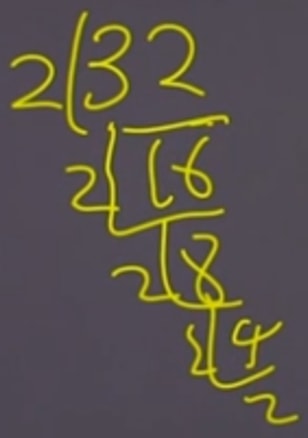Evaluating and simplifying radicals
Everything You Need in One PlaceHomework problems? Exam preparation? Trying to grasp a concept or just brushing up the basics? Our extensive help & practice library have got you covered. | Learn and Practice With EaseOur proven video lessons ease you through problems quickly, and you get tonnes of friendly practice on questions that trip students up on tests and finals. | Instant and Unlimited HelpOur personalized learning platform enables you to instantly find the exact walkthrough to your specific type of question. Activate unlimited help now! |
Make math click 🤔 and get better grades! 💯Join for Free
Intros
Examples
Free to Join!
Easily See Your Progress
 We track the progress you've made on a topic so you know what you've done. From the course view you can easily see what topics have what and the progress you've made on them. Fill the rings to completely master that section or mouse over the icon to see more details.
We track the progress you've made on a topic so you know what you've done. From the course view you can easily see what topics have what and the progress you've made on them. Fill the rings to completely master that section or mouse over the icon to see more details.Make Use of Our Learning Aids
Earn Achievements as You Learn
 Make the most of your time as you use StudyPug to help you achieve your goals. Earn fun little badges the more you watch, practice, and use our service.
Make the most of your time as you use StudyPug to help you achieve your goals. Earn fun little badges the more you watch, practice, and use our service.Create and Customize Your Avatar
 Play with our fun little avatar builder to create and customize your own avatar on StudyPug. Choose your face, eye colour, hair colour and style, and background. Unlock more options the more you use StudyPug.
Play with our fun little avatar builder to create and customize your own avatar on StudyPug. Choose your face, eye colour, hair colour and style, and background. Unlock more options the more you use StudyPug.
Topic Notes
How to evaluate radicals
When we work with the radical sign, what are we dealing with? We'll learn the steps to simplifying radicals so that we can get the final answer to math problems.
How to simplify radicals
There are four steps you should keep in mind when you try to evaluate radicals. It's a little similar to how you would estimate square roots without a calculator.
1. Find the number under the radical sign's prime factorization. You'll usually start with 2, which is the first prime number, and then you can move on to using numbers such as 3 and 5. Do this until the original number is now completely made up of prime numbers.
2. Figure out what the index of the radical is. If you just see a square root symbol, keep in mind that this is actually an index of 2. For other indices, there should be a tiny little number right before the radical sign that will indicate what the index is. This is the number that will tell you how many repeated prime numbers you'll need to have after factorization in order to move that number inside the radical to outside the radical. If you've got a cube root for example, you'll need a prime number to be found three times through prime factorization in order to move it outside.
3. Now move the groups of numbers from inside the radical sign to outside. If you're working with a cube root and under the radical sign you're left with 3, 3, 3, 2, 11 after prime factorization, you can move the 3's out from the sign. However, you'll only write it once as a group. If you've got prime numbers that can't be move outside, leave them under the radical sign.
4. Clean up what you've got through simplifying. If you've moved more than one group of numbers out, multiply what you've moved outside together. Do the same for the prime numbers you've got left inside the radical. Simplifying expressions is the last step when you evaluate radicals. Then you'll get your final answer!
Don't worry that this isn't super clear after reading through the steps. You'll get a clearer idea of this after following along with the example questions below.
Example problems
Question:
Evaluate the radicals
410000
Solution:
Firstly, let's do some factorization. Perform a long division to see what number you can pull out. It's most obvious that you can pull out 10's due to the original number being 10,000.

410∙10∙10∙10
We know that this is a 4th root since there's a little 4 right outside the radical sign to indicate this index. We have four 10's under the radical sign. We can take out the 10 and get the final answer:
10
Question:
Evaluate the radicals
5321
Solution:
Firstly, the following is true:
51=1
Then we are now free to deal with the denominator in this question. Perform long division on 32 to factorize it.

52∙2∙2∙2∙2
Since it's a 5th root, and we have five 2's under the radical sign, we can take out the 2 and get a final answer of:
21
Using calculator to evaluate radicals
An online calculator for simplifying radicals you can use can be found here. In your tests and exams, you will have to evaluate radicals without the use of a calculator, so make sure you've firmly understood the four steps in this lesson.
Looking to move on? Learn how to do operations with radicals, add and subtract them, and learn about converting entire radicals to mixed radicals.
Basic Concepts
remaining today
remaining today



